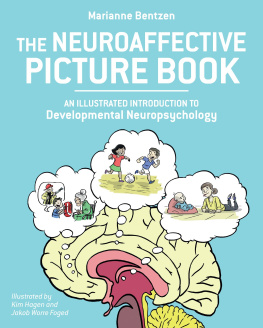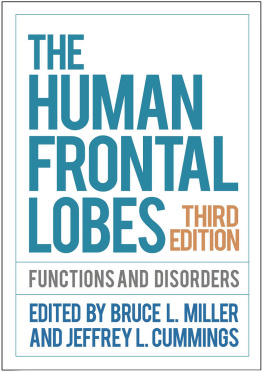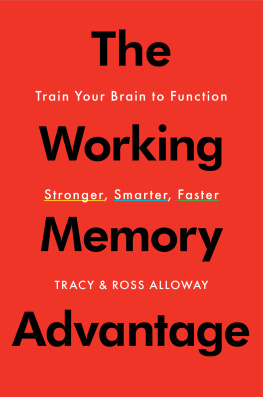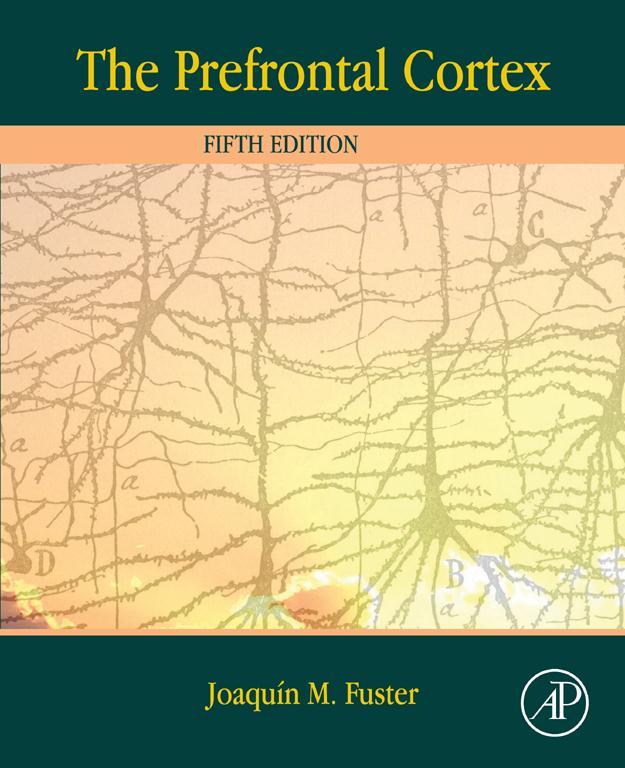Table of Contents
List of illustrations
- Figures in Chapter 2
- Figures in Chapter 3
- Figures in Chapter 4
- Figures in Chapter 5
- Figures in Chapter 6
- Figures in Chapter 7
- Figures in Chapter 8
Landmarks
Table of Contents
The Prefrontal Cortex
Fifth Edition
Joaqun M. Fuster, MD, PhD
Semel Institute for Neuroscience and Human Behavior, David Geffen School of Medicine, University of California at Los Angeles, Los Angeles, California

Front-matter
Joaqun Fuster has again done the field an invaluable service by synthesizing current scientific knowledge in the new edition of his classic book, The Prefrontal Cortex. Fusters splendid book has been an essential reference for neuroscientists since its initial publication in 1980, elucidating the organization and function of the brain region that most makes us human. The new 5th edition has been updated with a wealth of new material from neurophysiology and neuroimaging on the executive functions of the prefrontal cortex, synthesized under the notion that the driving function of prefrontal cortex is to coordinate new sequences of purposeful action. It is a masterful accomplishment.
William Newsome, Director, Stanford Neurosciences Institute, and Harman Provostial Professor of Neurobiology Stanford University, USA.
Joaqun Fuster has produced an extraordinarily insightful compendium of information about how the frontal cortex lets us develop new plans and sequences of thought and action the heart of the behavior that makes us ourselves. Fuster makes us realize how important time is to the organization of our behavior, and that our mental and physical actions are guided by brain networks that have the frontal cortex as the master hub. Fuster gives us a rich and deep view of how our frontal cortex guides our mental life and lets us develop action sequences over time.
Ann Graybiel, Professor, Department of Brain and Cognitive Sciences, Massachusetts Institute of Technology, USA.
The Prefrontal Cortex is not only a classic, but also an essential book for anyone interested in higher brain function. One might think theres nothing left to say but Fuster proves that wrong. The latest edition is fresh and vibrant, and itself essential, destined to be a classic in its own right.
Joseph LeDoux, University Professor, New York University, USA, and author of The Emotional Brain and Synaptic Self.
Once again, Dr. Fuster, the worlds pre-eminent expert on the frontal lobes, has delivered an instant classic that should be read by everyone interested in understanding the link between brain and behavior.
Mark DEsposito, Director, Henry H. Wheeler Jr. Brain Imaging Center, Professor of Neuroscience, University of California, Berkeley, USA.
A classic that has graced the library of many of us since its first edition appeared 35 years ago now returns, splendidly updated. As a result, this book will continue to be the go-to reference on the prefrontal cortex as we strive to understand more fully its critical role in brain function.
Marcus E. Raichle, Professor of Radiology and Neurology, Washington University School of Medicine, USA.
The frontal lobe serves the highest cognitive functions of the brain, including symbolic representation of the world, decision making, and planning for the future. Arguably, the enormous development of these functions distinguishes the human from other species. Joaqun Fuster has devoted his life to studying the many complex roles of the frontal cortex in behavior and cognition. This book is the product of his efforts to make these issues comprehensible in an exciting and fast-growing field. Even if you possess earlier editions of his book you should have this one to stay informed about the brain structure that makes us human. For that, this vastly updated edition is a must-have, whether you are a specialist or not.
Pasko Rakic, Chairman, Department of Neurobiology, and Director, Kavli Institute for Neuroscience, Yale Medical School, USA.
The Prefrontal Cortex is a classic, and the classic has just been updated, expanded and thought anew, with the depth and wisdom that characterize Fusters work. As before, this is an indispensable volume for neuroscientists.
Antonio Damasio, Dornsife Professor of Neuroscience and Director, Brain and Creativity Institute, University of Southern California, USA.
The frontal lobes are central to cognitive neuroscience. The revision of this important volume provides the crucial background needed to grasp their role. In the final chapter Fuster brings together all that is known by emphasizing the temporal course of brain networks in a way which serves to illuminate action, consciousness and free will.
Michael I. Posner, Professor, Department of Psychology, Institute of Cognitive and Decision Sciences, University of Oregon, USA.
Joaqun Fuster is one of the leading scientists in the field of cognitive neuroscience. He is famous not only for his discovery of memory cells in the frontal lobe of the monkey, but also for his excellent books. Among them the most famous and influential is The Prefrontal Cortex. I remember the first edition of it back in 1980. It was a mere intellectual pleasure reading it. The book reviewed an amazing amount of data from anatomy, ontogeny and physiology to the effect of lesions on innate and conditioned behavior and synthesized them in a coherent theory. In this new completely re-written edition of the book, Fuster has been able to repeat the enterprise. In spite of the enormous amount of new data, many coming from the rather messy field of brain imaging, he has been able to review them and put them in a clear theoretical frame. I am sure the new generation of neuroscientists will be influenced by this book in the same way as I was more than 20 years ago and will receive, by reading it, the same intellectual pleasure.
Giacomo Rizzolatti, Professor of Human Physiology, Department of Neuroscience, Section of Physiology, University of Parma, Italy.
This is a superb, fresh, in-depth, review of one of the most complex and fascinating topics in cognitive neuroscience. In this, the latest edition of his excellent book, Fuster further substantiates the general proposition that the prefrontal cortex serves the organization of goal-directed actions in the most human of all action domains. Based on a wealth of recent empirical evidence, he places the temporal integrative functions of the frontal lobe including working memory and planning at the summit of the perception-action cycle. There, with access to myriad signals from the internal and external milieus, the prefrontal cortex attends to the orderly pursuit of rational, linguistic, and social goals. It is a must read for all interested in neuroscience.
Richard Thompson, William M. Keck Chair in Biological Sciences and Professor of Psychology and Biological Sciences, University of Southern California, USA.
Copyright
Academic Press is an imprint of Elsevier
32 Jamestown Road, London NW1 7BY, UK
525 B Street, Suite 1800, San Diego, CA 92101-4495, USA
225 Wyman Street, Waltham, MA 02451, USA








